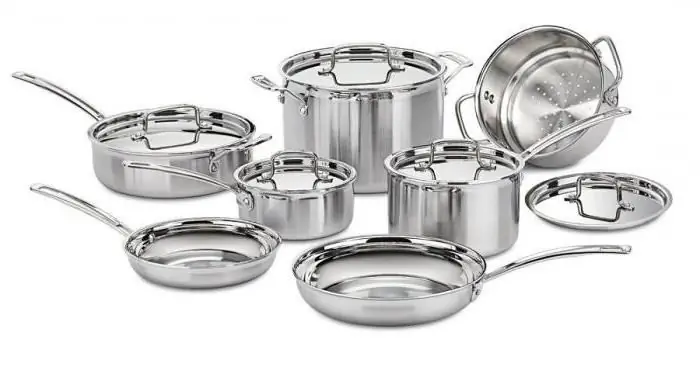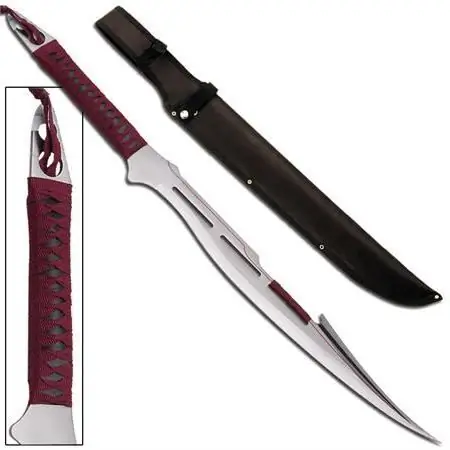2025 Author: Howard Calhoun | [email protected]. Last modified: 2025-01-24 13:10:35
Steel rolling includes a type of work such as sheet metal, this is one of the types of metal products manufactured at factories. Products obtained in the process of such processing are widely used in industry, as well as for creating a wide variety of metal structures. It is also possible to produce a wide variety of profiles. Types of rolled steel, carried out in this way, can be hot-rolled or cold-rolled.
Description of the first kind of hot-rolled sheets
Hot-rolled sheet is a product of rolled metal, which is obtained in the process of hot rolling of steel in a rolling mill. It is also necessary to carry out subsequent heat treatment. It is important to note here that the resulting products are divided into several types:
The first type is sheet hot-rolled steel GOST 16523-89 thin sheet. The thickness of the obtained blanks does not exceed 3.9 mm. If the thickness does not exceed 1.2 mm, then the release is made not in sheets, but in rolls. A cut edge is also required, the thickness of which should not exceed 0.4 mm. In addition, structural sheet products can also be produced, having pickled orunetched surface treatment

Second product type
If we talk about the second type of products, then this is hot-rolled sheet steel GOST 19903-74 thick plate. These products include sheets whose thickness starts from 4 mm and ends with 160 mm. Release in sheets is carried out if the thickness is from 0.4 mm to 160 mm. Release in rolls occurs if the thickness is from 1.2 mm to 12 mm. It is also worth noting here that there are two states - hot-rolled and hardened.
Types of steel by composition
Another division into types of rolled steel is its purpose and composition. The first category is low alloy hot rolled sheets. The second category is structural hot rolled sheets.
If we talk about the first type, it is natural that low-alloyed raw materials are used for production and rolling. Products obtained in this way are most often used in such areas as industry, construction, and the production of welded metal structures for various purposes. Due to the fact that the cost of such a rolled steel product is rather low, as well as its quality, low-alloy sheets are used as raw materials for the production of various non-critical parts in light and heavy industries.

If we talk about structural raw materials, then it is the opposite of the first category. The high carbon content and high alloy content of the material led to the fact that its costis quite high, and it is used mainly for the manufacture of the most important metal parts. If we consider the positive qualities of these grades of sheet steel, we can highlight the following points:
- product range is quite diverse;
- metal weldability is quite high;
- high corrosion and thermal resistance;
- performance is also high;
- the quality of the metal coating is quite high, and most importantly, the price-quality ratio is one of the most acceptable;
- material processing is quite simple, but high resistance to mechanical stress is observed.
General description of cold rolled sheets
This raw material is also obtained by rolling ductile steel at a rolling mill, but already of a cold type. The result of rolling the steel in this way is a high quality product with the highest coating quality. The thickness of the raw material can vary from 3.35mm to 5mm. What is important, the hardness of the material can also be different. Due to the fact that the rolled products are of the cold type, it is possible to distinguish such advantages of the final material as:
- high quality metal top layer;
- high resistance to welding deformation and overall performance;
- In order to apply paint materials to the surface of the sheet, there is no need for additional processing.

The most widespread raw materials received inindustry. They produce such things as: perforated and roofing galvanized sheets, as well as corrugated board. Cold rolling is best suited for the production of those structural materials that in the future must have high precision, resulting from the fact that there is a high resistance to deformation under the influence of a welding machine.
Thin sheet products
As mentioned earlier, thin sheet steel is obtained by hot or cold rolling. All technical requirements that these materials must meet are specified in the state document No. 16523-97. If the raw material is made by the cold method, then its thickness should be in the range from 0.4 mm to 4 mm. The length of the finished product is up to 3.5 m or more. If hot rolling is used, then the thickness of the finished product should be from 0.4 to 5 mm, and the maximum length should be up to 4 m. The width of the finished thin sheet steel should be in the range from 600 to 1400 mm.

How billets are rolled
Currently, the stainless steel rolling process is carried out by rolling slabs. A slab is a steel billet that has the appearance of a parallelepiped, and the length of its rib is in the range of 5 to 12 m. This raw material of stainless material must be passed through rolls several times to give it the desired size and shape. The next step is editing the already rolled sheet. For this there is a roller unit. The last stage in the production of such material is the processing of edges, as well ascut into blanks of the desired size. It is worth adding here that if hot-rolled steel was used, that is, before starting to process raw materials, it was heated in a furnace, then after the process of edging and cutting, it is necessary to subject the resulting sheets to cooling.

Material Composition
Another important property is the different compositions that are used to produce alloyed stainless steel. An extensive amount of raw materials allows you to significantly increase the choice of the final product, the main difference of which lies in the physical and chemical properties of the steel. For example, martensitic and martensitic-ferritic alloys have gained the greatest popularity in the food industry. This is due to the fact that their resistance to corrosion is one of the highest. Another example is the use of austenitic alloys to produce ductile and wear resistant parts. Such elements are most widely used in mechanical engineering or machine tool building.

If we talk about product prices, then, of course, everything depends on the thickness and method of production. For example, the cost of cold-rolled steel grade 65G with a thickness of 1.2 mm will be equal to 94,000 rubles per ton.
Recommended:
Cold-rolled steel: characteristics, features, applications

Cold rolled steel is sheets or coils obtained by cold rolling. One of the most demanded types of metal rolling. The main field of application of cold rolled steel sheets is stamping and bending
Food stainless steel: GOST. How to identify food grade stainless steel? What is the difference between food stainless steel and technical stainless steel?

The article talks about grades of food grade stainless steel. Read how to distinguish food stainless steel from technical
Corrosion resistant steel. Steel grades: GOST. Stainless steel - price

Why metal materials break down. What are corrosion-resistant steels and alloys. Chemical composition and classification according to the type of stainless steel microstructure. Factors affecting pricing. Steel grade designation system (GOST requirements). Application area
Farm greenhouses: types, prices. Do-it-yourself farm greenhouse

The article is devoted to farm greenhouses. Design options, cost of structures and self-assembly equipment are considered
440 steel - stainless steel. Steel 440: characteristics

Many people know 440 steel. It has established itself as a reliable, anti-corrosion, time-tested hard material, which is most often used for the manufacture of knives for various purposes. What is the secret of this alloy? What are its chemical, physical characteristics and applications?

